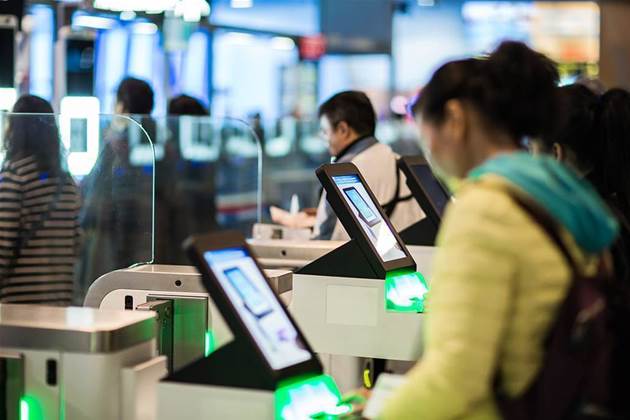The multi-million dollar rollout of new facial recognition smartgates in the arrivals halls of Australia’s international airports has been booted into the red zone after the Department of Home Affairs finally admitted to delays of at least another two years.

In answers to questions on notice from recent budget estimates, the department revealed the rollout now won’t occur until at least 2021, more than three years later than first proposed.
“New biometric facial recognition smartgates will be deployed for international arrivals throughout 2021-2022,” Home Affairs said.
The setback means the department won't reach its goal of processing 90 percent of international travellers by 2020 under the $94 million ‘seamless traveller’ initiative.
The new arrivals smartgates were to help the department meet this goal by using facial recognition to allow travellers to pass through arrivals halls without producing a passport.
They were originally expected to replace the department’s ageing fleet of 2007 IDEMIA (Morpho) smartgates as part of a new biometric border control solution by last financial year.
Home Affairs also used answers to questions on notice to confirm that the “specific [Vision-Box] smartgates used in the trial will not be deployed”.
The admission comes several months after iTnews revealed the trial of next generation smartgates at Canberra Airport, as well as the wider rollout, had been paused pending review.
That review, which assessed the trial “against the acceptance testing plan and acceptance criteria” and was intended to inform the department’s next steps for the project, is now complete.
Documents obtained under freedom of information laws by iTnews show the department intended to restart the troubled border project by November pending sign-off from Home Affairs Minister Peter Dutton.
But a pall of confusion continues to envelope the project, with the department yet to comment on which border technology vendor is supporting the realigned upgrade.
Home Affairs currently has contracts with Vision-Box and IDEMIA for broadly similar work; upgrading arrivals kiosks and smartgates, as well as trialling next generation border clearance solutions.
The contract with IDEMIA, which is valued at $30 million over the next five years, was signed in June, prior to the department commencing its review of the IT project.
Since July, multiple sources have told iTnews that the 2017 deal with Vision-Box has ceased due to several problems with facial recognition trials.
Home Affairs has, to date, refused to clarify whether or not this is the case, despite multiple requests for comment from iTnews.
Accuracy of Vision-Box smartgates to blame
Answers to questions on notice also provide some of the first detail on the department’s decision to pause the trial of the next-generation smartgates at Canberra Airport.
The department said the decision was taken as the “solution was not fit for purpose”.
“Accuracy was a factor in the decision to pause the trial, however there is not one specific measure of accuracy,” the department said.
However, it said the accuracy rates for matching white and non-white coloured faces had not been a factor in the decision.
“A fit-for-purpose solution is assessed on a range of criteria and in this case specific issues related to liveliness, image construction (torn images), incorrect referrals, availability (up time) and reliability (rejection of valid passengers).”
Details of the upgrade were quietly removed from the Australian Border Force website late last month.
Correction: A previous version of this article incorrectly stated that "accuracy rates for matching white and non-white coloured faces had been a factor" in the department's decision to pause the trial. The sentence should have read "had not been a factor".


_(20).jpg&h=140&w=231&c=1&s=0)


_(22).jpg&h=140&w=231&c=1&s=0)





 iTnews Executive Retreat - Security Leaders Edition
iTnews Executive Retreat - Security Leaders Edition












_(1).jpg&h=140&w=231&c=1&s=0)



